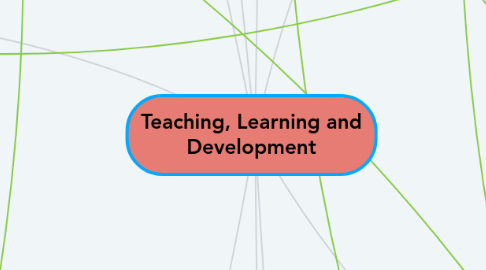
1. Class 5: Making Instructional Decisions
1.1. Let the Students Hack The Lesson Plan
1.2. Constructivist Learning
1.2.1. Students are Active in Learning
1.2.2. Learning involves Problem Solving, Inquiry, Critical Thinking and Seeing Multiple Perspectives
1.2.3. Social Negotiation
1.2.4. Self-Determination
1.3. Bloom's Taxonomy
1.3.1. 1. Knowledge
1.3.2. 2. Comprehension
1.3.3. 3. Application
1.3.4. 4. Analysis
1.3.5. 5. Synthesis
1.3.6. 6. Evaluation
1.4. Universal Instructional Design
1.4.1. Instruction That is Accessible and Effective For All
1.5. Inquiry-Based Learning
1.6. Problem-Solving Learning
1.7. Developmentally Appropriate Schools
1.7.1. Less Stress
1.7.2. Less Behavioural Problems
1.7.3. More Motivation For School
2. Class 6: Knowing Our Students Know
2.1. Assessment
2.1.1. Find out What Students Know and Can Do
2.1.2. Used to Help Students Improve Learning
2.1.3. Let Students Know How Much They Learned
2.2. How to Assess?
2.2.1. Allowing Students to Self-Assess
2.2.2. Student Friendly Language
2.2.3. Given Opportunities to Improve
2.2.4. Demonstrate Capability
2.2.5. Students Know How To Improve
2.3. Backward Design
2.3.1. 1. What are the Big Ideas and Expected Learning Outcomes?
2.3.1.1. Teach for Understanding
2.3.2. 2. How is It Best to Assess these Learning Expectations?
2.3.3. 3. Plan Instruction and Experiences Based on Big Ideas and Assessment of Expectations
3. Class 7 Individual Differences-Intellectual Abilities and Challenges:
3.1. What is Intelligence
3.1.1. Learn From Experience
3.1.2. Adapting to One's Environment
3.2. Students with Exceptionalities
3.2.1. Low Incidence
3.2.1.1. Moderate to Severe Disabilities, Physical Impairments
3.2.2. High-Incidence
3.2.2.1. Mild Disabilities- Behaviour and Learning Disorders
3.3. Access to Curriculum
3.3.1. Physical Access
3.3.1.1. Sensory and Motor Access
3.3.2. Cognitive Access
3.3.2.1. Individual Student View
3.3.2.2. Curriculum View
3.4. Education
3.4.1. Evolution- Normal vs. Special Education
3.4.2. Integration - Child Adapts to the System
3.4.3. Inclusion- Belonging for Everyone
4. Class 8: Socio-Cultural Consideration
4.1. Student Dilemmas
4.1.1. Individualism
4.1.2. Collectivism
4.2. Multi-Culturalism
4.2.1. Diverse - No One Dominant Group
4.2.2. Pedagogy Equity
4.2.3. Content Integration
4.2.4. School Culture
4.2.5. Reducing Prejudices
4.2.6. Knowledge Construction Process
4.3. Culturally Responsive Practice
4.3.1. Constantly Changing Cultural, Knowledge and Instructional Base
4.4. Students in Low SES Homes
4.4.1. Affects Development and Learning
4.4.2. Be Open-Minded
4.4.3. Understand How Poverty Affects Them and Treat Them With Humanity
4.4.4. Not Incompetent or Bad Parent
4.5. Aboriginal Education
4.5.1. Risks
4.5.1.1. School Failures
4.5.1.2. Lack of Resources
4.5.1.3. Lack of Parental Support
4.5.1.4. Lack of Aboriginal Studies Teachers
4.5.2. Protective Factors
4.5.2.1. Aboriginal Role Models
4.5.2.2. Community Support
4.5.2.3. Positive Self-Image
4.5.2.4. Resilient
5. Class 9: End of the School Year and Standardized Assessments
5.1. Test Types
5.1.1. Criterion-Referenced
5.1.2. Norm-Referenced
5.2. Criticism of Standardized Tests
5.2.1. Biased
5.2.2. Stressful
5.2.3. Time Consuming
5.2.4. Does Not Enhance Learning
5.2.5. Does Not Reflect Instruction
5.3. Standardized Tests Should
5.3.1. Enhance Learning
5.3.2. Improve Curricular Design
5.3.3. Non-Intrusive
5.4. Preparing Students for Standardized Tests
5.4.1. Teach Test-Taking Skills
5.4.2. Simulate Time Constraints
5.4.3. Familiarize Students of Types of Questions
5.4.4. Involve Students in Marking
6. Class 1: Planning For The Upcoming School Year
6.1. Reflective Teaching
6.1.1. Assessing Teaching on Effectiveness to Develop Teaching Skills
6.2. Foundational Topics
6.2.1. Learning and Cognition
6.2.2. Development
6.2.3. Social and Cultural Influences
6.2.4. Motivation
6.2.5. Behaviour and Classroom Management
6.2.6. Individual Differences
6.2.7. Assessment and Evaluation
6.2.8. Teaching and Instruction
6.2.9. Psychological Foundations of Curricula
6.3. Schwab's Four Commonplaces of Education
6.3.1. Teacher
6.3.2. Topic
6.3.3. Setting
6.3.4. Student
6.4. Educational Psychology
6.4.1. Research Process
6.4.1.1. 1. Observation of Phenomena
6.4.1.2. 2. Formation of Questions
6.4.1.3. 3. Application of Research Methods
6.4.1.4. 4. Development of Guiding Principles
6.4.1.5. 5. Development of Theories
6.5. Teacher Planning
6.5.1. Results (Darling-Hammond)
6.5.1.1. Excellent Instruction
6.5.1.2. Enhanced Student Learning
6.5.1.3. Exemplary Environments
6.5.2. Instructional Approaches
6.5.2.1. Teacher-Centred Approach
6.5.2.2. Student-Centred Approach
7. Class 2: Considering Developmental Differences
7.1. Reviewing Files of New Students
7.1.1. Vital for Gathering Important about Student and Possible Student Needs
7.1.2. Avoid Creating Labels on Students based on Information
7.2. Development
7.2.1. Learning becomes organized as it's developed
7.2.2. Social, Physical and Cognitive Changes
7.3. Principles of Development
7.3.1. Development is a Gradual and an Orderly Process
7.3.2. Development's progression contains rapid and slow periods of growth
7.3.3. Development has both qualitative and quantitative changes.
7.3.4. Individuals Develop at Different Rates
7.3.5. Development comes from Genetic (Nature) and Environmental (Nurture) Factors
7.4. Higher Order Functioning
7.4.1. Prefrontal Cortex
7.4.1.1. Decision Making
7.4.1.2. Goal Setting
7.4.1.3. Risk Taking
7.5. Growth Mindset
7.5.1. Embrace Challenges
7.5.2. Learn from Mistakes and Failure
7.5.3. Persistence
8. Class 3: Approaches to Learning
8.1. Cognitive Approach
8.1.1. Every Student has a different mental processes and require active participation in learning
8.1.2. Learning is Developing New Schemas and Assimilating Existing Ones
8.1.3. Shanker's Self Regulation
8.2. Behaviourist Approach
8.2.1. Skinner and James' Operant Conditioning
8.2.2. Students Learn Experiences through Reinforcement and Punishment
8.2.3. Reinforcing Student Idea's and Behaviour for Class Management and Goal Setting
8.3. Constructivist Approach
8.3.1. Student-Centred Learning
8.3.2. Every Student Has Their Own Way of Learning and Have Their Own Experiences
8.3.3. Students Learning By Reconstructing an Idea That Already Exists With New Experiences
8.3.4. Collaborative Learning Helps Them Develop New Experiences
8.3.5. Vygotsky's Zone of Proximal Development
8.4. f
9. Class 4: First Week of School
9.1. What Makes an Effective Teacher?
9.1.1. Employs Researched Instructional Strategies
9.1.2. Effective Use of Classroom Management Techniques
9.2. How to Affect Student Achievement?
9.2.1. Designing a Classroom Environment That Facilitates Learning
9.2.2. Make Good Choices on Effective Instructional Strategies to Use
9.2.3. Effective Use of Classroom Management Techniques
9.3. The Student
9.3.1. Self Efficacy
9.3.1.1. Students Are Really Resilient And Are Motivated To Learn
9.3.2. Self Regulation
9.3.2.1. Self-Evaluation
9.3.2.2. Control Over Their Learning
9.3.2.3. Collaboration is a Key

